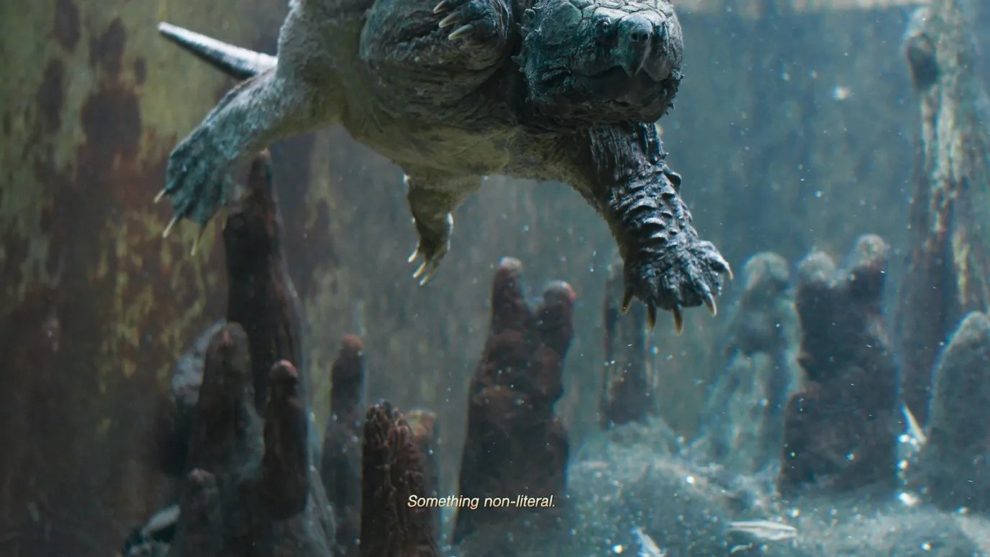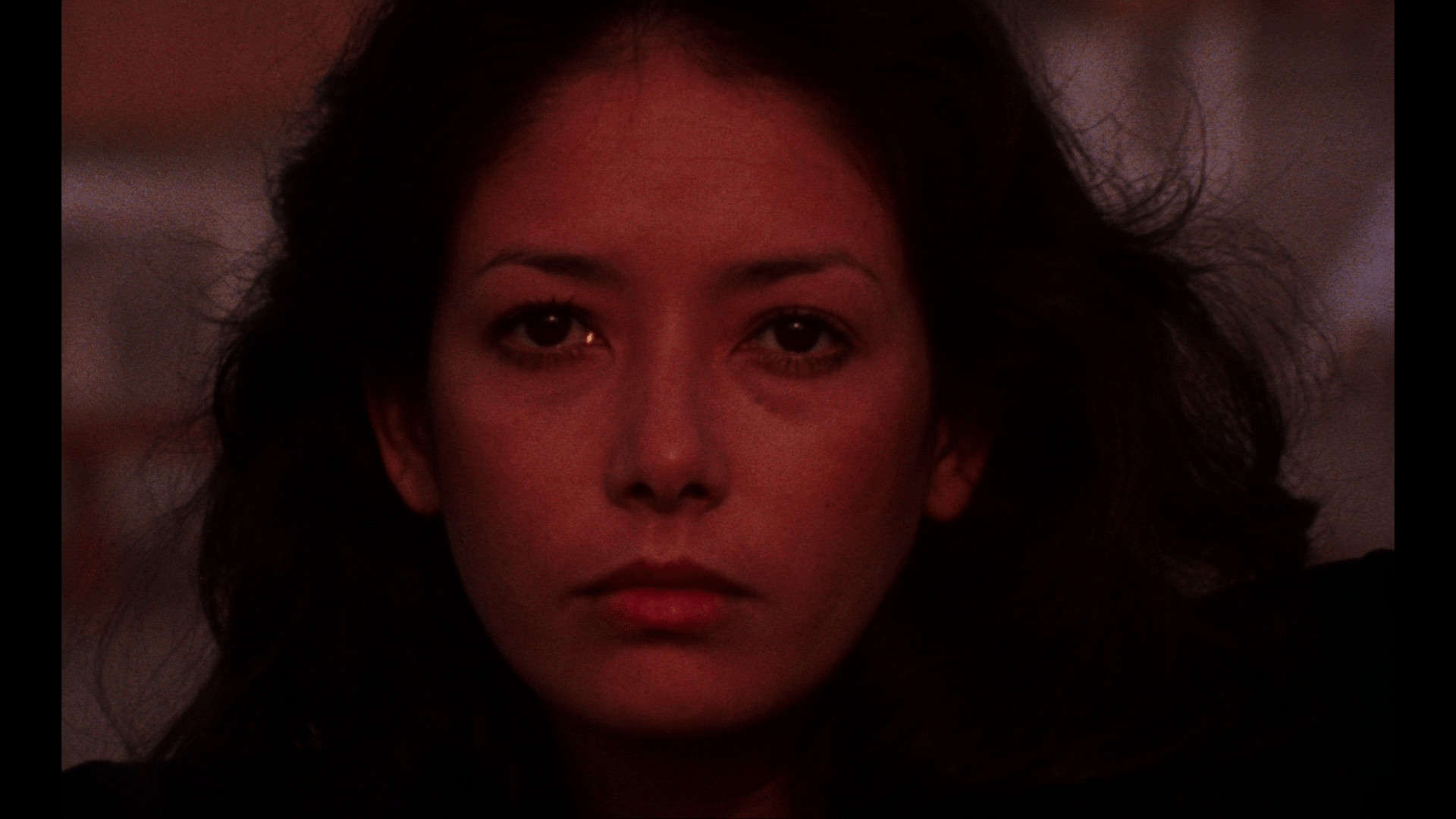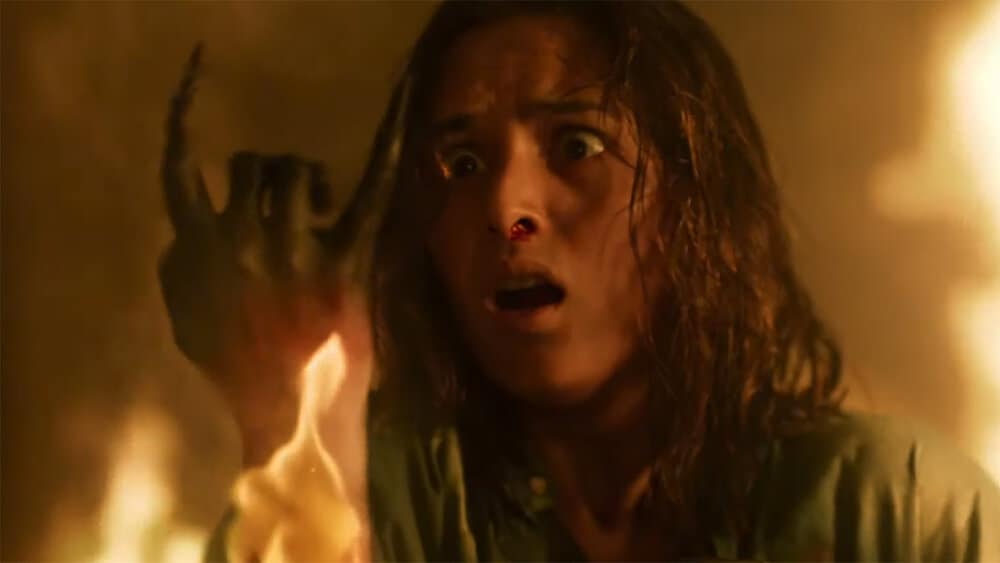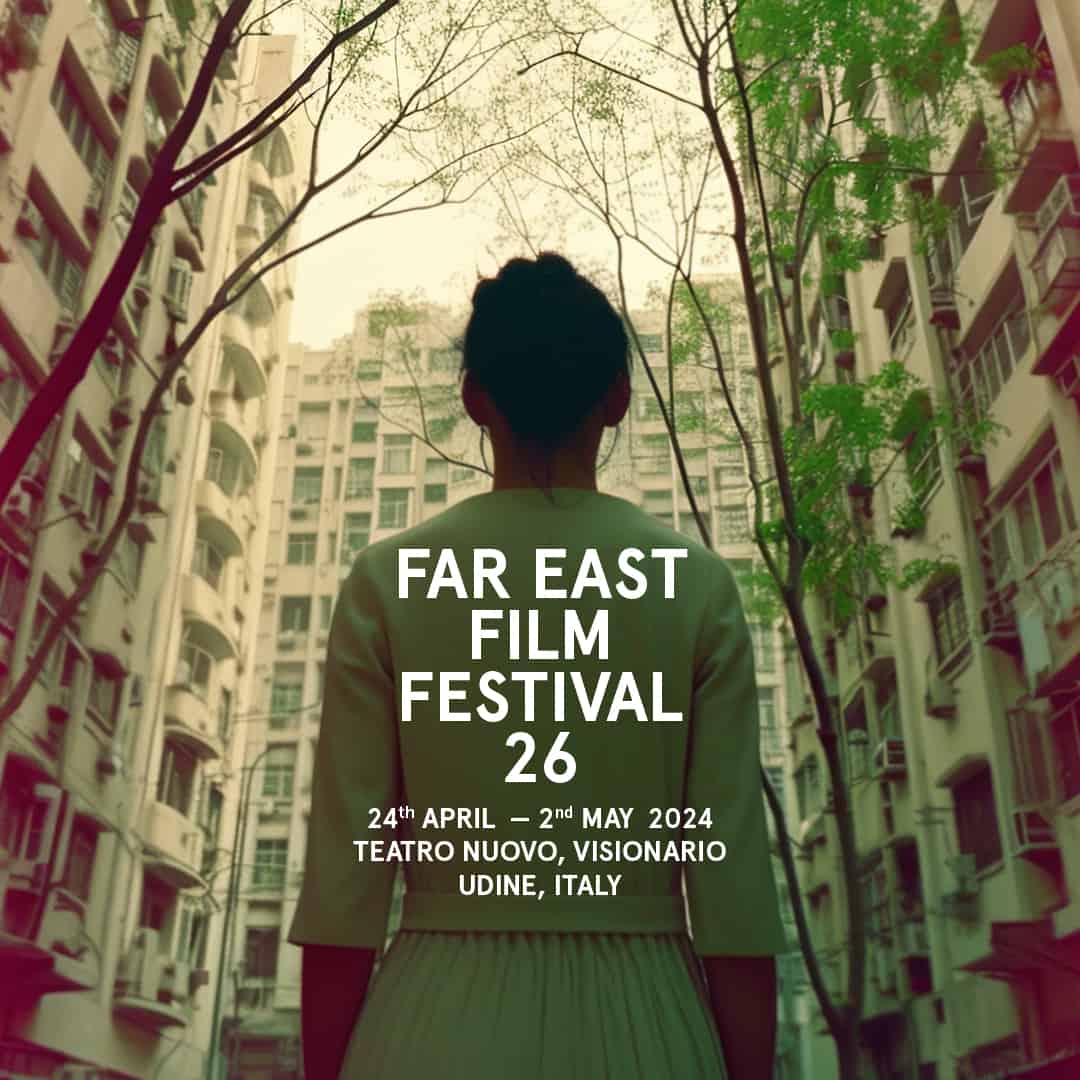Parinda Mai studied at Princeton University and gained a Master of Fine Arts from the School of the Art Institute of Chicago, specialising in cinematography and film production. Inspired by the folk story “Twelve Sisters”, learned across multiple platforms as a child, she reinterpreted the moral of the story and its implications with “12 Kalpas – A Beginning of Beginning” (2021). “Blinded by Centuries” is an experimental 13-minute short that stems from the same project.
Blinded by Centuries is screening at International Film Festival Rotterdam
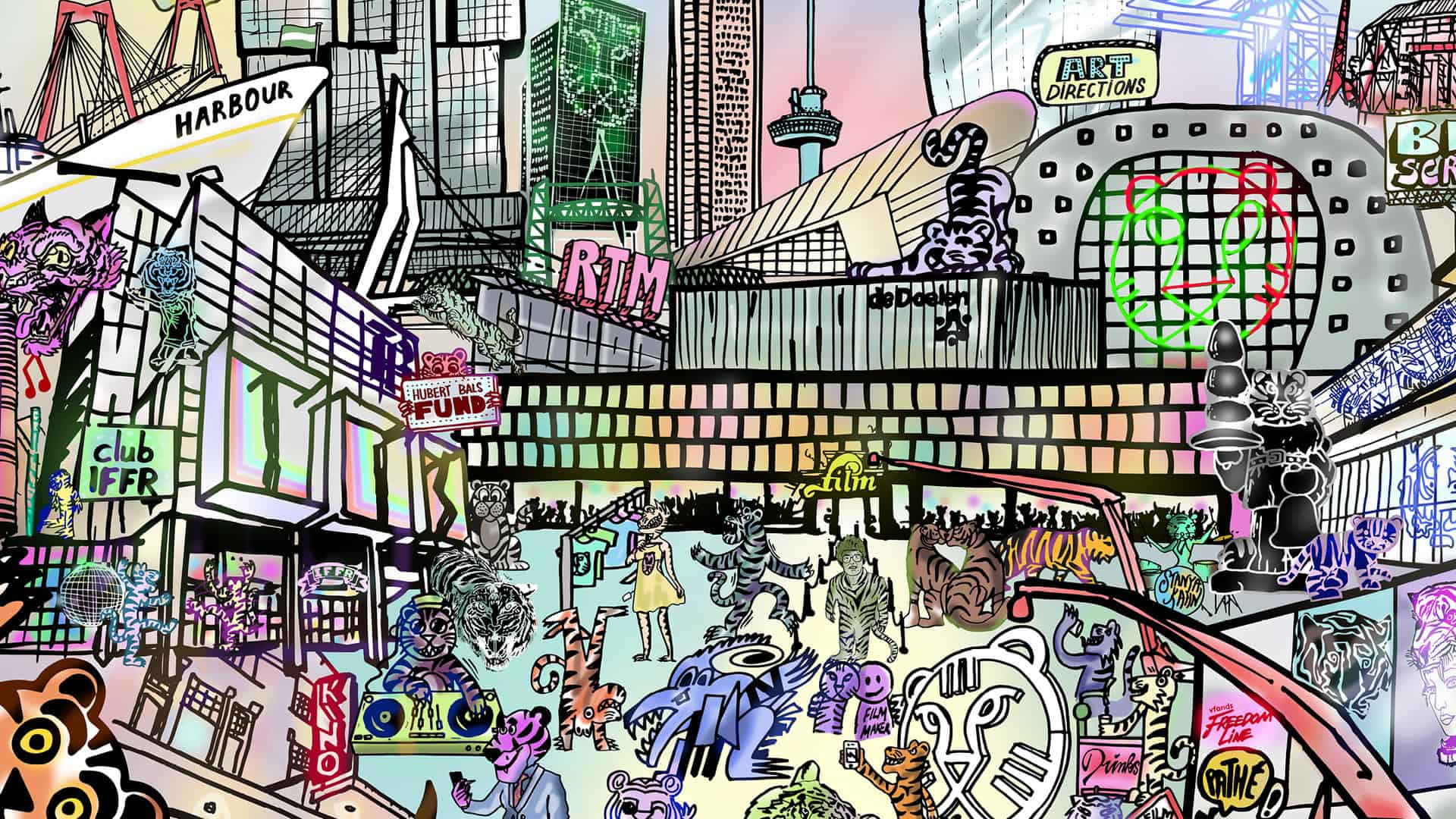
The synergy of image and sound becomes evident from the beginning of the film, where we hear two voices on top of each other telling a life story, while a number of images that might as well be paintings, follow one another. A young woman is eating a water melon inside the woods. A young man is sitting in a field, rotating a stick on his hand, while cattle surrounds him. A naked young woman is sitting on a tree before she jumps down, suddenly becoming all-clothed. The images and the narrations, whose duality gives it a humoristic, ironic hypostasis, seem to be two completely different things.
The narration eventually takes another form, as a kind of singing under trip hop music moves the setting inside a zoo, presenting a somewhat ironic comment about how the animals moved from nature to cages, about how nature has become “domesticated”. Images of labs that produce artificial meat, “Meat 2.0” as the big letters on the screen state, seem to make a comment about the artificiality the future brings, as people move from the field and the forests to the cities, with the next images highlighting this aspect.
A kind of a virtual tour inside a cave, narration about ancient cave paintings, give the short an almost ritualistic sense, before the succession of images becomes rather faster, with some of them only appearing for a moment, with the music following the tempo, while moving into more rock paths. The slow motion of a turtle swimming brings the pace down again. The music becomes even more intense after that, with the images changing to the three youths from before, all inside a field, dancing and stepping on watermelons obliterating them completely.
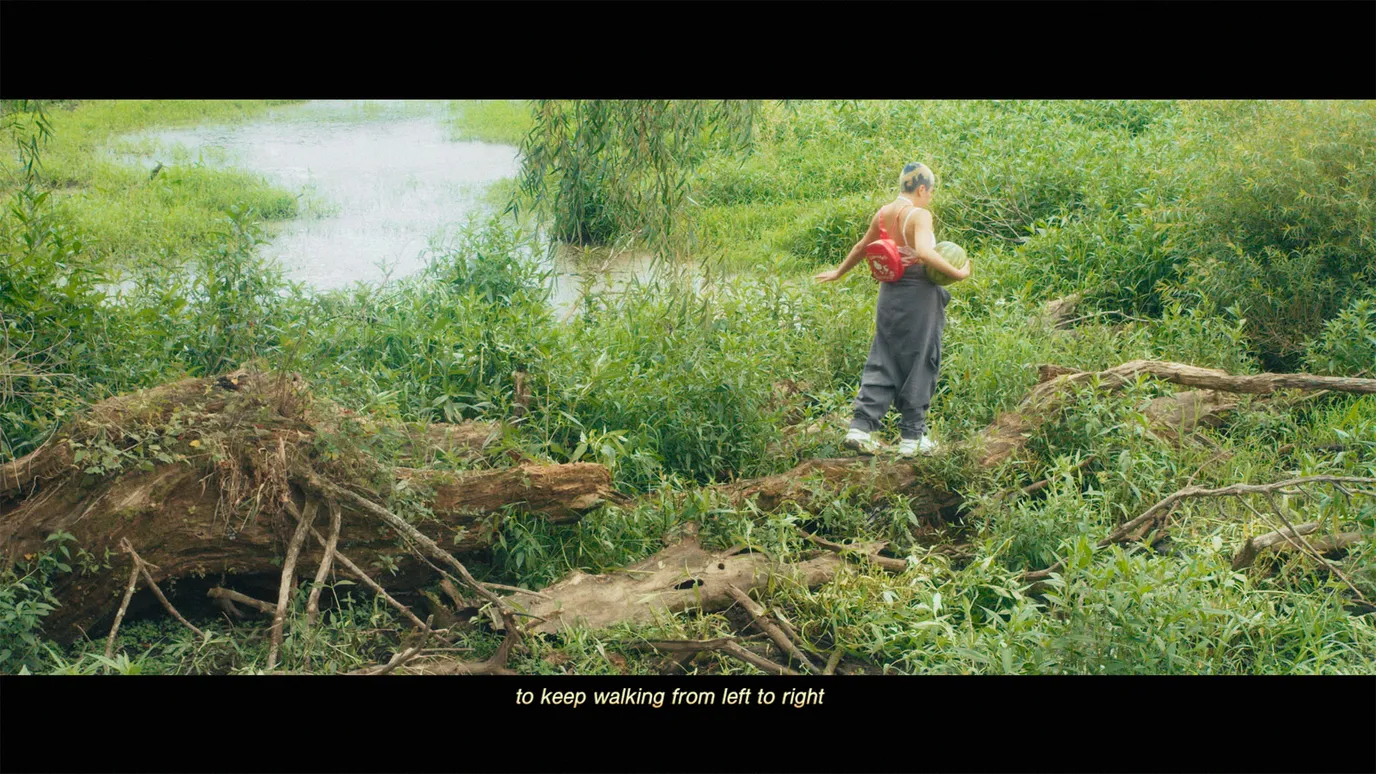
Moving somewhere between video art and a movie, “Blinded by Centuries” definitely stands out due to its visual approach. The many techniques used, from frame-within-frame, superimposing, manipulation of film speed all work quite well here, essentially keeping the viewer on their toes, trying to guess if they missed something important, particularly when the film speeds up. At the same time, the images themselves are quite powerful, both in terms of footage and the sequences with the actors, with the watermelon and its intense greens and reds having a hypostasis that can only be described as symbolic.
At the same time, the last sequence, when all three actors appear together, in PC fashion, since one has Caucasian, one Oriental, and one African American characteristics, communicates a sense of defiance against what is happening in the world. In combination with the excellent, varying throughout the film music, the result is quite impressive, and could actually work quite well as a music video.
The connection with “Twelve Sisters” tale will probably elude the Western viewer (including this one) since the myth is not exactly popular on that side of the world, but “Blinded by Centuries” still remains a rather powerful combination of visuals and sound, and one of those films that deserves to be seen on the big screen.


